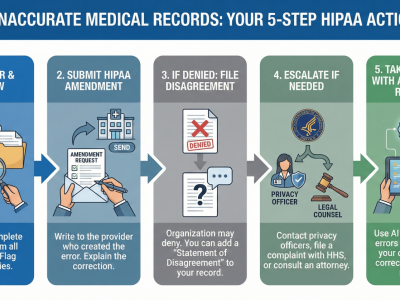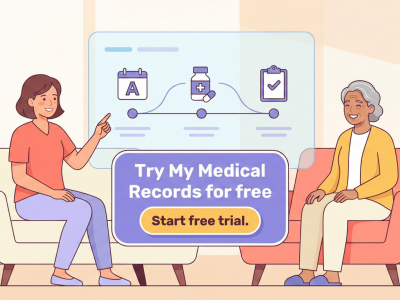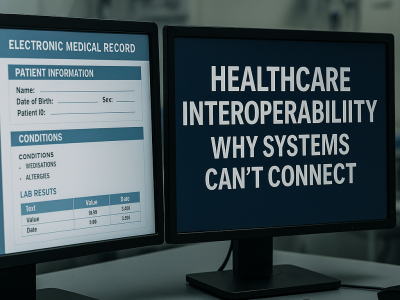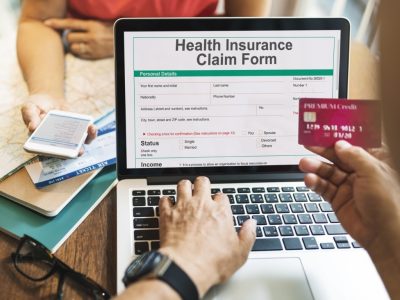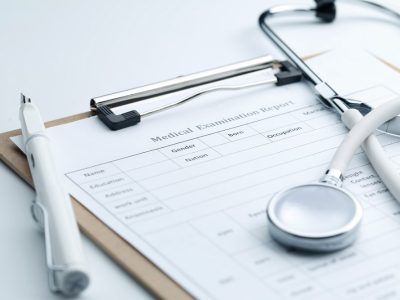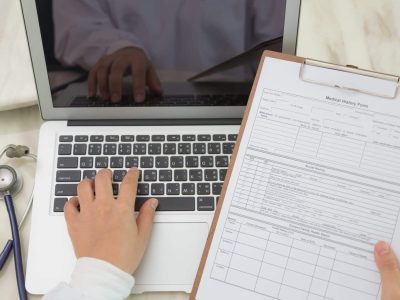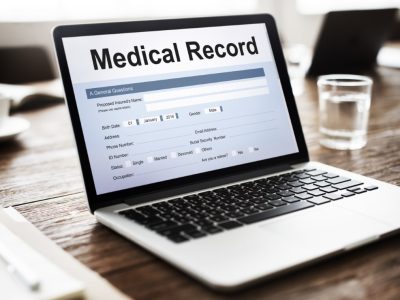In an emergency, quick and accurate access to your medical records can save critical time—and potentially lives. Learn essential steps to organize, secure, and share your health data efficiently before a crisis strikes.
KEY TAKEAWAYS
- Having medical records readily accessible ensures accurate, fast-informed care during emergencies.
- Preparing includes compiling essential documents, verifying accuracy, and ensuring HIPAA-compliant storage.
- Sharing records with loved ones or providers in advance avoids delays when minutes matter most.
- Platforms like My Medical Records simplify emergency readiness with organized, AI-enhanced access.
- A pre-planned medical summary and contact permissions reduce chaos during urgent situations.
Table of Contents

Emergencies happen without warning—injuries, chronic complications, or sudden illness can arise at any time. In these critical moments, healthcare providers must act quickly, often relying on the patient’s medical history to guide treatment. Without accurate data or rapid access, delays and errors become risks.
Preparing your medical records ahead of time dramatically improves responsiveness. Platforms such as My Medical Records allow secure storage of key documents and instant sharing—making preparation proactive, convenient, and trustworthy.
Why Emergency Preparedness with Medical Records Matters
Medical providers rely heavily on past information: medications, allergies, surgeries, chronic conditions, and recent lab results. In life-threatening events or situations where patients can’t communicate, having this information accessible becomes vital. Paramedics or emergency room staff can make better decisions when they don’t have to hunt for scattered documents.
Misinterpretations, incomplete records, or missing data can lead to wrong treatments. For example, administering aspirin to someone with a bleeding disorder—or prescribing beta blockers to someone with asthma—could be dangerous. Prepared records reduce the risk of harm and improve care accuracy.
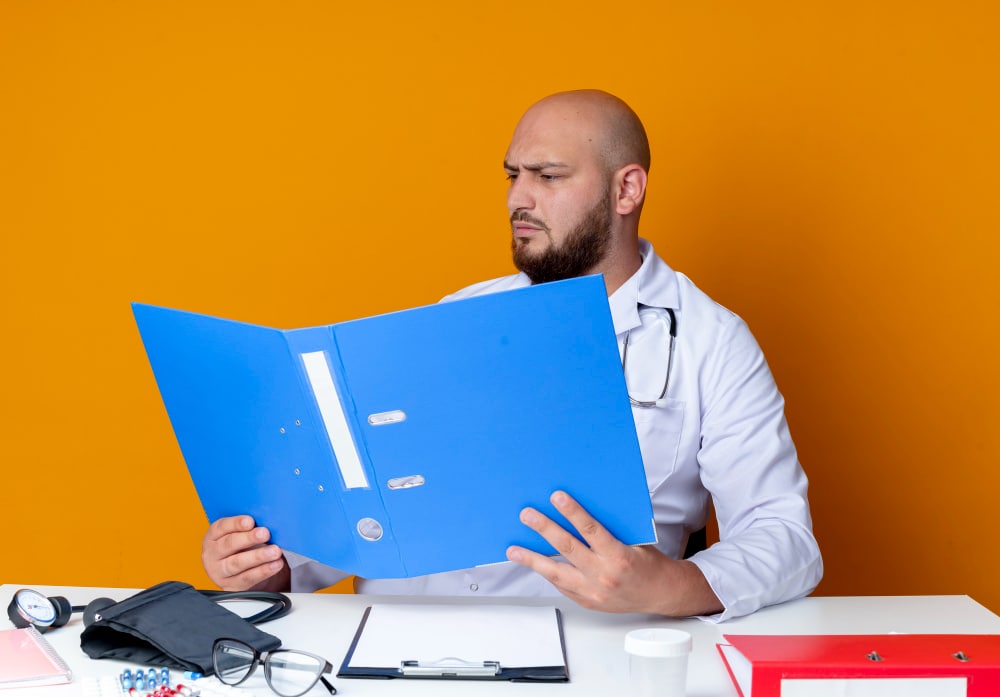
Gathering Essential Medical Documents
First, identify and collect key documents: recent labs, imaging reports, current medication lists, vaccination history, chronic illness summaries, known allergies, surgical history, and emergency contacts. A simple emergency summary page—one to two pages—provides providers an at‑a‑glance snapshot.
If you have a unique identifier like a medical record number, compile it with your chart reference and facility info. Services can help you locate this number automatically; see the article what is your medical record number and how to find it? for guidance.

Verifying Accuracy and Correcting Errors
Ensure that your records are accurate. Mistyped allergies, incorrectly coded conditions, or outdated medications can cause serious errors. Use processes like those detailed in correct inaccurate diagnosis medical records to flag and rectify discrepancies.
Doing this preemptively allows healthcare providers to trust the files during emergencies, reducing risk of misinterpretation or outdated information.
Secure Storage and Accessibility
Once records are collected and verified, choose storage options that balance accessibility with security. While storing files in drawers or email folders offers some access, it’s neither secure nor shareable in urgency.
Cloud-based solutions offer better options. Platforms like My Medical Records provide encryption, password protection, and easy sharing—ideal for emergency scenarios. Learn more about secure options at where can I store my medical records?.
Provide backups on USB or printed copies, especially when traveling or if digital access is unreliable. Ensuring redundancy can be a life‑saving fallback.

Sharing Permissions and Contacts
Pre‑authorize contacts or healthcare proxies to access your files. This eliminates delays when loved ones or caretakers need information quickly. You can grant and revoke permissions easily, and the provider can be contacted instantly if needed.
Platforms like My Medical Records enhance this by allowing rapid sharing via secure link or email with controls over access duration and scope. Confirm all potential providers or family members understand how to access records when needed.
Crafting a Portable Medical Summary
A concise summary of critical information—medical conditions, primary care provider, emergency contacts, allergies, and medications—should be stored in a wallet card or saved on a smartphone screen. This is especially useful when digital access isn’t immediately available or for first responders.
Update the summary regularly—at least annually or following major changes (new prescriptions, surgeries, or diagnoses).
Routine Maintenance and Updating
Medical data can change frequently. To stay prepared, revisit and update your medical records every 3–6 months. Remove redundant or outdated documents, correct errors, and renew sharing permissions. A cloud system like My Medical Records simplifies this by reminding you when documents become stale and automatically organizing history.

Combining Cloud and Local Record Plans
While secure cloud access is ideal, consider pairing it with physical backups—USB drives or printed copies in labeled folders. This dual‑approach ensures accessibility even during service outages or power issues. Keep backup locations known by trusted contacts and store them in a known, secure spot like a home safe or trusted friend’s home.
Testing Your Emergency Access Plan
Test your emergency plan ahead of time. Ask a trusted friend or relative to attempt accessing your records using instructions or access links you’ve established. Confirm they can access files, view summaries, and contact providers if needed. This rehearsal identifies issues and provides confidence about availability during actual emergencies.
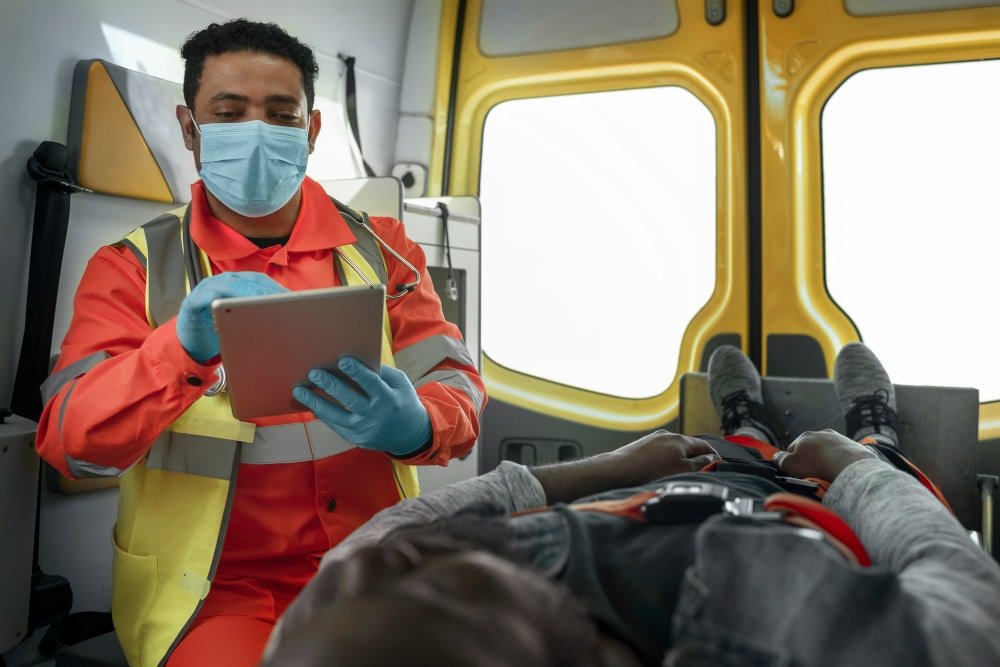
Why My Medical Records Makes Emergency Planning Easier
As an AI-driven, secure, and streamlined records platform, My Medical Records is designed with emergency readiness in mind. It helps users compile, verify, store, and share critical information quickly. If you want to explore the platform’s features or get one-on-one setup assistance, you can contact us.
The platform offers user-friendly dashboards, instant share links, audit logs, and reminders for reviewing data. Combined with AI-powered tools for data cleanup and duplicate detection, it ensures your records are clean, accessible, and accurate.
You can also learn more about who we are and our mission on the about page.
Practical Emergency Scenarios and Record Use
Whether traveling abroad, changing care providers, or facing sudden injury, having records prepared can make all the difference. In urgent care clinics, presenting organized information—digital or printed—cuts admission time and helps providers begin appropriate interventions faster.
For example, allergic reaction treatments require immediate awareness of known triggers or prior epinephrine use. Chronic conditions like diabetes or asthma need accurate dosing history for medications. Emergency-ready records streamline care and avoid dangerous assumptions.
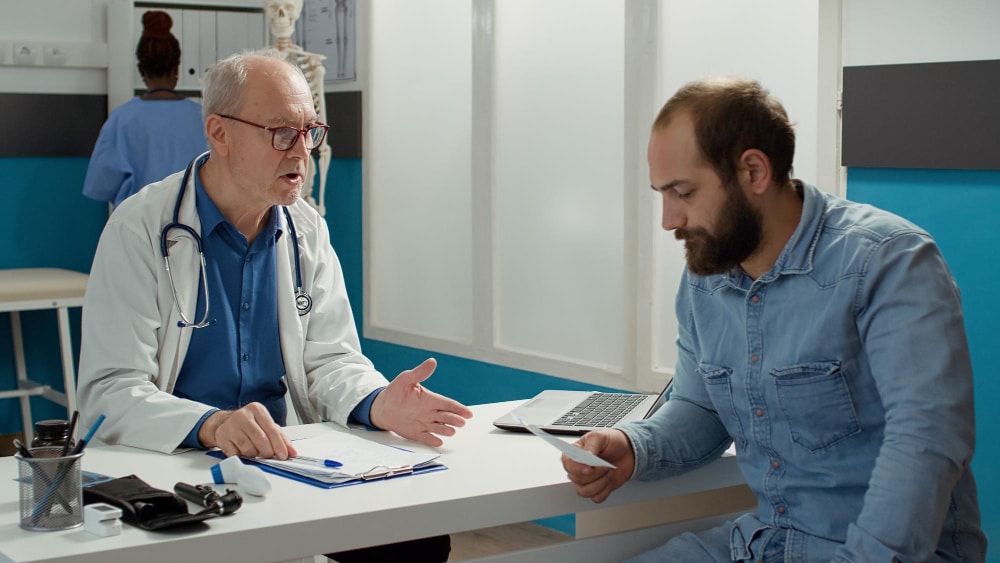
Addressing Common Concerns and Questions
People often worry about privacy when sharing records rapidly. Using secure platforms with encrypted links and access control mitigates that risk. Others question the reliability of digital tools—backups, offline copies, and verified sharing procedures give peace of mind.
Some may think it’s too complex—but simple summary documents and intuitive apps make preparation manageable. Systems like My Medical Records guide users through each step and simplify ongoing updates.
Finally, knowing how long to keep medical records is critical—certain documents must be retained for legal or treatment reasons. Check our article on how long do medical records need to be kept? for details.
Building Long-term Preparedness Habits
Emergency readiness isn’t a one-time task—it’s a habit. Schedule semi-annual reviews, keep your summary updated, and maintain sharing permissions. Add reminders to your calendar and store backup copies in multiple secure places.
Over time, this preparedness becomes instinctive—just part of responsible health management.
Helpful Tips for Emergency Medical Record Preparation
Create a brief medical summary card to carry with you. Keep it updated and share copies with trusted contacts or caregivers so help is informed even when you're unable to speak.
Summary:
A thoughtful strategy for emergency medical readiness combines accurate data, secure storage, regular review, and accessible sharing. Platforms like My Medical Records make this process seamless—empowering users to stay organized, protected, and confident that help has the right information.
In the chaos of emergencies, having accurate data at your fingertips ensures better outcomes, faster treatment, and peace of mind for you and your loved ones.
Related Topics:
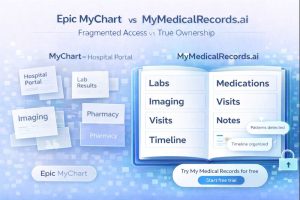
Epic MyChart vs. MyMedicalRecords.ai: Portal Access vs. True Ownership
Epic MyChart vs. MyMedicalRecords.ai: Portal Access vs. True Ownership Meta description: Epic MyChart only shows records from one hospital system. MyMedicalRecords.ai aggregates 100% of your

What to Do If There Is Inaccurate Data in Your Medical Record
The chart that does not match you You probably discovered the inaccurate medical records error because something routine went wrong: a prior authorization denied, a

From Chaos to Clarity: A Family Caregiver’s Guide to Unified Health Records
Here’s what nobody tells you about caregiving: The hardest part isn’t watching your loved one struggle with their diagnosis. It’s trying to keep track of
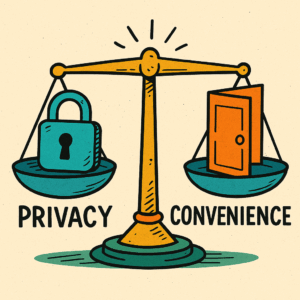
Privacy vs Access: Finding the Right Balance in Your Digital Health Record
Healthcare interoperability is the ability of different healthcare systems, devices, and applications to seamlessly share, understand, and use patient data across organizations and geographic boundaries.
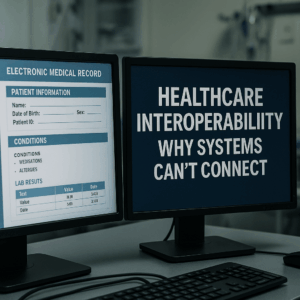
Healthcare Interoperability: Why Systems Can’t Connect
Healthcare interoperability is the ability of different healthcare systems, devices, and applications to seamlessly share, understand, and use patient data across organizations and geographic boundaries.

How to Merge Medical Records from Multiple Doctors and Avoid Errors & Duplicates
Learn how to merge medical records from multiple doctors, avoid duplicate entries, and reduce errors. Use AI tools like My Medical Records to simplify the process.


